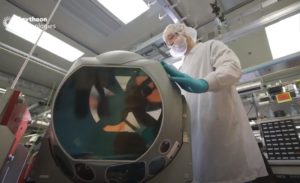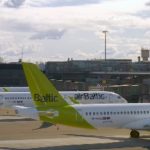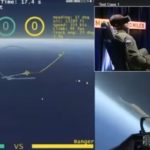The merger of the Raytheon Company with United Technologies has led to a combined team of 60,000 engineers across the world working on a range of different projects.
Raytheon Technologies’ Chief Technology Officer Mark Russell explains how the company is bringing together the expertise between Raytheon and Pratt & Whitney and Collins which formed part of United Technologies.
Russell said the merger brought together specialists from all over the world in mechanical engineering to avionics, pressure systems to motors, missiles, radars and space systems. He described the scale and capabilities of the newly merged company: “60,000 plus engineers, 40,000 patents, two research groups – pretty impressive. I get all the toys and everything I want to play with.”
Solving hard technical problems
He added: “The finance people talk about synergies, I talk about how we solve hard technical problems.”
“The engineers are excited, the one thing you can all come together on is how exciting for the company’s engineers is in the new technologies – so think big mechanical meets big electrical.”
Russell added that the company now had engineers across different specialisms who could help solve problems. He said: “We’ve got hypersonic missiles that can go a mile per second they can get to amazing temperatures and we got somebody that can solve the materials problem we have.”
His background is from the defence side of the business. He said: “What I’ve learned is, on the defence side, is that we design systems based on threats. How far can we detect something? With the commercial side there’s a commercial pull – what are the things they need from energy efficiency, to the size and weight, that will be market pull where they can win in the marketplace, with the right discriminators.”
“It’s fascinating to see how we derive the technologies we need, we do end up with the same core technologies, though, from additive manufacturing, to power systems and thermomanagement.
Different sectors, common problems
Russell said although there were differences, there were also commonalities between the type of problems that were being solved across the different sectors. Russell said: “What’s interesting, the kind of power system you need for a directed energy weapon. think megawatts, is the same system you need for electrification and planes, literally identical problems you’re trying to solve at that component level done in Collins Rockford plant will work in both – we just need to connect people.”
In terms of future technological achievements for the combined company Russell said cyber security products would be needed for both commercial and weapons systems. He added that the industry was “hitting it at the very beginning ” when it came to machine learning which could help all across aviation, aerospace and defence with everything from language translation, to fighters to boarding planes.
He said applied machine learning would help take advanced products to the next level. “We’re going to be able to get to a point where the machines start helping you making decisions with assisted decisions, not just you know by themselves, but you also want them doing the hard crunching if you will, through the data. And so you think big data, you think about everything from facial recognition to sorting out targets to, to figuring out airspace over the capital region. These are things that humans can no longer look at a screen and figure out.”


